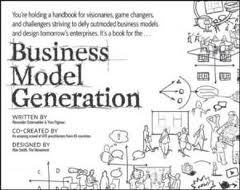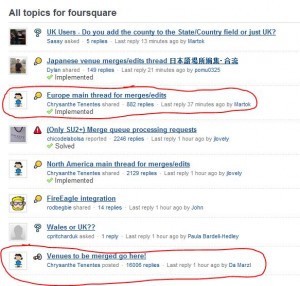In his recent blog post, Fred Destin said that an entrepreneur should never tell a VC three things when fundraising:
- How much cash you have and when you are running out of money.
- Other investors that you are talking to.
- Your detailed cap table and your last round valuation.
I should note that Fred was not advocating giving false information when confronted with these questions or that you should hope to never have to reveal anything along these lines, just that you should give a “non-answer” answer until a more appropriate point of time in the process. The comments to his post ran the gamut from well informed to jaw-droppingly naive. One commenter, Eileen Burbridge, disagreed with Fred on all three counts. As she was writing her comment, it ran long enough that she decided to put up a post of her own rebutting Fred’s position. The debate then continued in the comments to her post, including comments from Fred (you have to love the blogoshpere).
In my prior life, I raised a lot of VC money for dozens of clients while at Alex. Brown. My partners there worked on hundreds of other deals that we talked about constantly. So, although it has been a while, I know more than a little bit about this stuff, and I thought that I would chime in with my own point of view.
Fred is absolutely right on point 2. He is also right on point 1, but it may not make a difference. Eileen is right on point 3. Let’s take them one by one:
Should you tell a VC how much cash you have and when you will run out of money? Fred’s point is that you should avoid signaling desperation even if you are, well, desperate. Eileen’s point is that your cash balance and burn rate are not too hard to verify and you risk looking insincere (best case) or dishonest (worst case), when the facts come to light. My view is that if you come right out and tell a VC you are out of cash in six weeks, he or she will think that you are an idiot. If you tell a VC that you have enough cash for 12 months when you don’t, he or she will think you are an idiot once they figure it out. The only way to avoid this situation is to make sure that you do not end up there in the first place. Make sure that you have at least six, and preferably nine, months of cash before you start fundraising. If you don’t have that much cash, it is time to hit your existing investors up for a bridge. If they are not willing to bridge you in this situation, your odds of raising VC money on decent terms are close to nil, so you really need to revisit everything anyway. Even then, you want to put as brave a face as possible on the situation without actually appearing clueless. Regardless of how much cash you have, understand that it is generally in the VCs interest to slow the process down. They get more information about how the business is performing and you get more desperate. The best way to counter this is to have multiple conversations going at once to foster true competition for your deal. Which brings us to:
Should you tell a VC about others firms with whom you are talking? Fred says that he always asks this and always gets the answer. In his case, he says that he only uses the information to make sure that he is not falling behind, but that other less reputable people will collude on terms and drive the valuation down. Eileen thinks that VCs should compare notes and that it is more efficient when entrepreneurs make this easy. Let me make this perfectly clear. You NEVER tell a VC who you are talking to or where you are in the process with specific other potential investors. As Fred points out, the worst case is that those investors will gang up on you. Even if they don’t do that, the “comparing of notes” that Eileen alludes to is bad for the entrepreneur because if one potential investor does not like the deal, it either makes every other investor nervous or informs them that there is little or no competition for the deal. The only situation where it is to your advantage to have VCs talking to each other early in your fund raising process is if your deal is so hot that they are tripping over each other to get the deal and it turns into a feeding frenzy. If that is the case, then none of this applies. Please note that at the end of the process, you can bring two parties together. Once you have a term sheet from firm A and another from firm B, you can introduce them if you feel so inclined. You can tell firm B that you are going to go with a firm that offered a better set of terms and offer to see if they can get in if they are prepared to do the deal on those better terms. Just be aware that you still may end up with both firms signing up to the less attractive set of terms put forth by firm B.
Should you tell a VC about your detailed cap table and your last round valuation? Am I suggesting that you slap down your full cap table including specific option grants to individual employees and related exercise prices at the first meeting? No, but let’s be realistic. You probably already have your board members listed on your Web site. If you have had a prior round of venture funding, it is probably already in Venture Source. With respect to valuation, there are only three possibilities. Your last round was either too high, too low or just right. Although you might not want to get anchored to your last valuation if it was on the low side, the last two really don’t pose much of a problem. If your last round valuation was too high, you are better off addressing this elephant in the room up front. Saying that you and your existing investors understand that your current round will be based on current conditions may help convince the VC that he or she won’t be wasting his or her time by digging in on your deal. In my experience, it would be a real head-scratching moment if you weren’t prepared to talk about these items at a high level even in the first meeting (or phone call).
When raising money, you want to do everything possible to develop alternatives. Encouraging potential investors to wait until you are on life support or giving them a road map to narrow your options down to one is suicide. At the same time, in order to get a deal done, you will have to allow them to perform diligence. Deal with item three when it comes up or bring it up if it has the potential to derail things later. Item two will become apparent when you give VCs your financials, but it is fine to put the best face on things until they draw their own conclusions. Lastly, keep item three close to your vest forever (or until the very last minute if you really want another investor in the deal).
 One of the books getting buzz in the startup community these days is Business Model Generation: A Handbook for Visionaries, Game Changers, and Challengers. Currently it is #158 in Books on Amazon. I read through it a week or so ago, and it is a useful addition to the entrepreneur’s library.
One of the books getting buzz in the startup community these days is Business Model Generation: A Handbook for Visionaries, Game Changers, and Challengers. Currently it is #158 in Books on Amazon. I read through it a week or so ago, and it is a useful addition to the entrepreneur’s library.

